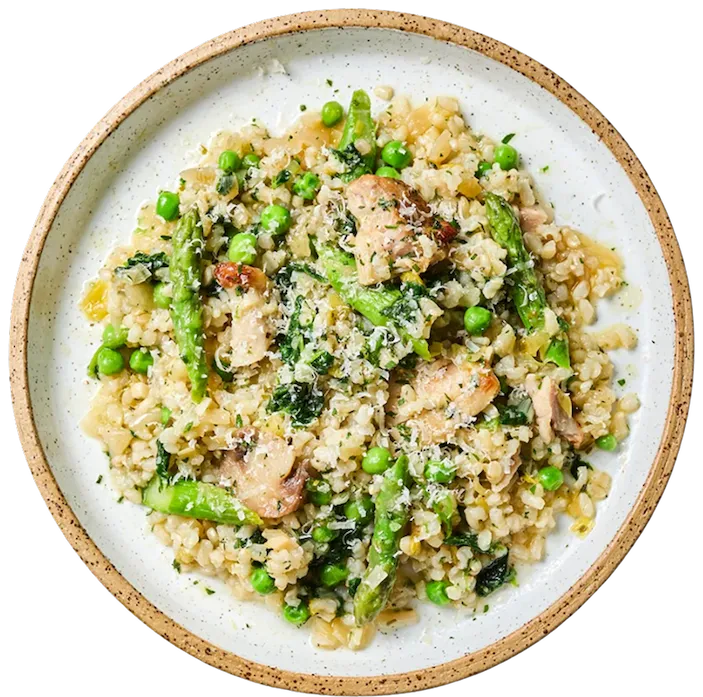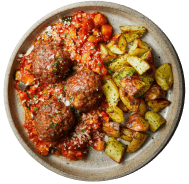How To Eat A Balanced Diet
What Does A Balanced Plate Look Like?
A balanced diet starts with a balanced plate, but how exactly can this nutritional balance be achieved? In this article, we cover how to incorporate the five food groups onto your plate, in what proportions, and how to manage portion sizes and diversify the foods you eat.
what good health looks like on your plate
Dietitian Mei explores which foods to include on your plate to ensure your diet is nutritionally balanced
Take home messages
- Eat a variety of foods from the 5 food groups to make sure you're getting a balanced diet.
- Eating a diverse range of foods helps you get the right mix of nutrients in your diet for good health.
- Match your portion sizes with your activity levels but above all, enjoy your food!
Why does it matter to eat a nutritionally balanced plate?
If you’re looking to improve your health and nutrition, one of the best things you can do is to start eating a balanced plate that is nutritionally complete.
Eating a balanced plate is all about making sure you’re getting the right mix of nutrients to fuel your body and keep you healthy.
What does the science say ?
- Eating a balanced and varied diet is crucial for good health, wellbeing, and it may help to reduce the risk of health conditions.
- There are five main food groups to include that will help you to achieve a healthy balanced diet:
1) Protein from meat, beans, fish, eggs, pulses
2) Fibre from vegetables and fruit
3) Carbohydrates from wholegrains (quinoa, barley, oats), rice, potatoes, bread, and pasta
4) Fats from oils, nuts, seeds and spreads
5) Dairy and dairy-free alternatives from yoghurts, cheese, milk and kefir
- Be aware of high salt, saturated fat, and sugary foods as they may contribute to an increased risk of developing health conditions so enjoy them in small quantities and less frequently.
How do I practically integrate a balanced plate?
- Aim for 3 servings of vegetables and 2 portions of fruit a day. Remember, fresh and frozen contain the same goodness! If you are living with a gut-related condition or taking certain medications, the servings might depend on your tolerance to fibre. Eat a rainbow - choose a range of vibrantly coloured fruits and vegetables for the antioxidants and other vitamins and minerals.
- Depending on your health goals and/or medical conditions, include one serving of carbohydrates as part of each meal and opt for wholegrains where possible
- Choose lean meat, remove excess fat/ skin from meat. Limit frying. Try to include two portions of (oily) fish each week.
- Aim for three portions a day of dairy to meet most calcium needs; for example, a small pot of yoghurt; 1/3 pint of milk; a small matchbox size piece of cheese. Try to choose reduced-fat versions if possible. If you are using dairy alternatives, please ensure they are fortified with calcium.
- Opt for healthy fats. Extra virgin olive, and rapeseed oil are good choices as they are high in good fats (polyunsaturated and monounsaturated fats). Minimise intake from saturated fat as high intake may increase the risk of heart disease [1]. Remember that all types of fat are high in energy and if you have weight management goals, be mindful of your intake and use sparingly.
- Where possible, cut down on processed foods g. sweets, cakes, crisps and sugary soft drinks.They are generally high in sugar, fat or sugar and don’t contain any of the good stuff such as fibre and antioxidants.
Final thoughts
By following these simple steps, you can create a nutritionally balanced plate that will provide you with all the nutrients you need for good health and nutrition.
Start with a small and simple nutrition nudge to get you going!
Reference
Further reading
related content
more content: General Health
browse our ranges.
choose from one of our ranges or personalise your own menu from 60+ meals.
- low FODMAP

- eat well, live well programme

- gluten free

- high protein

- weight management

- ibs

- lowest calorie

- lower carbs

- mediterranean

- smaller range

- pcos

- lean + lighter

- menopause

- heart healthy

- plans

- full menu

- gift cards
- take the quiz